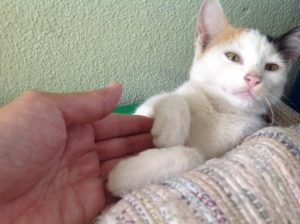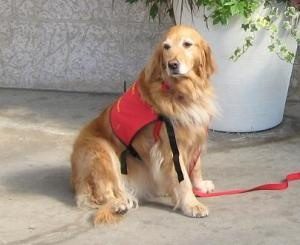 The general rule of treatment and management of psychiatric conditions, including maintenance of mental health, is the need for an established framework of pharmacology and psychotherapy. In many parts of the world, this framework includes non-human interaction. Two areas of focus with emerging evidence are human-plant interactions and human-animal interactions. For the purpose of this discussion, we will look into the potential of animals in various modes of interaction with humans in the management of psychiatric disorders or dysfunctions.
The general rule of treatment and management of psychiatric conditions, including maintenance of mental health, is the need for an established framework of pharmacology and psychotherapy. In many parts of the world, this framework includes non-human interaction. Two areas of focus with emerging evidence are human-plant interactions and human-animal interactions. For the purpose of this discussion, we will look into the potential of animals in various modes of interaction with humans in the management of psychiatric disorders or dysfunctions.
The use of animals in the management of mental health conditions is officially termed as Animal-assisted Therapy (AAT) or Animal-assisted Intervention (AAI). AAT most commonly utilises canines, equines, dolphins and, to a lesser extent, smaller animals such as cats, hamsters and fish. The choice of animal depends on its capacity to trigger interactions with a particular patient and is mostly divided into the use of domestic pets like dogs and cats, or agricultural animals like horses.
 Various psychological and physiological models have been employed to study how AAT works and how it can be manipulated to produce a desirable psychological outcome. One of the primordial theories, proposed by Wilson in 1984, is known as the biophilia hypothesis – based on how human survival is naturally dependent on cues from animals to indicate safety or threats. Applying this principle to modern psychiatry, it is observed that trained animals, such as a therapy dog, can convey non-verbal cues of peacefulness to an acutely anxious, confused or compulsive patient simply by remaining calm. However, this form of therapy can only achieve its goals with the synergistic effect of other kind of psychotherapy, pharmacology and varies according to the severity of illness itself.
Various psychological and physiological models have been employed to study how AAT works and how it can be manipulated to produce a desirable psychological outcome. One of the primordial theories, proposed by Wilson in 1984, is known as the biophilia hypothesis – based on how human survival is naturally dependent on cues from animals to indicate safety or threats. Applying this principle to modern psychiatry, it is observed that trained animals, such as a therapy dog, can convey non-verbal cues of peacefulness to an acutely anxious, confused or compulsive patient simply by remaining calm. However, this form of therapy can only achieve its goals with the synergistic effect of other kind of psychotherapy, pharmacology and varies according to the severity of illness itself.
Pet therapy is one of the major elements of AAT and it is widely used to both diagnose and treat the paediatric spectrum of mental health conditions. Trained therapy pets, usually cats and dogs, are used in psychiatric assessment of children with social and communication dysfunctions such as autism and attention deficit/hyperactive disorder. Useful information can be gathered just from assessing a child’s voice tone, eye contact, response, behaviour and personality in interacting with the pet. It overcomes barriers encountered in routine psychiatric interviews. Following the required assessment, what comes next? The same AAT pets can enhance the treatment process when indicated, even though more structurally-trained pets are usually prescribed.
Studies looking at the role of AAT in conditions within the mood disorder spectrum – like depressive disorders and dementia – show that AAT can re-establish functioning by specifically addressing depression. This is of particular interest in the geriatric population, where depression and dementia commonly co-exist. Elderly patients placed in a new environment, such as hospital wards and nursing homes, develop behavioural changes like low mood, anti-social tendencies and loss of ability to carry out activities of daily living. This is thought to be triggered by the lack of visitors or an apathetic environment.
 AAT is helpful in this situation in two ways. First of all, a therapist or doctor with a therapy animal is seen as less of a threat. Secondly, an animal that responds in a calm manner in spite of the patient’s mental state is perceived as caring. Highly-structured therapy techniques such as hands-on therapy are developed for patients with depression, where they are encouraged to come into close contact with the animals. Hugging, playing, feeling the animal’s heartbeat and noticing its physiological response to touch can stimulate emotional expression, thought processing and memory recall in a patient who is socially, emotionally and functionally blunted.
AAT is helpful in this situation in two ways. First of all, a therapist or doctor with a therapy animal is seen as less of a threat. Secondly, an animal that responds in a calm manner in spite of the patient’s mental state is perceived as caring. Highly-structured therapy techniques such as hands-on therapy are developed for patients with depression, where they are encouraged to come into close contact with the animals. Hugging, playing, feeling the animal’s heartbeat and noticing its physiological response to touch can stimulate emotional expression, thought processing and memory recall in a patient who is socially, emotionally and functionally blunted.
Despite emerging evidence of the impact of AAT in mental health, there are several barriers to its integration in routine management. Many critics opine that current evidence is limited both in quantity and quality to establish the clinical significance of AAT. For example, there are only three studies so far addressing the use of AAT in reducing agitation in acute psychiatric illnesses. In addition to that, the evidence pertaining to AAT in behaviour correction as described in correctional institutions is poor despite its application. Paradoxical results may also occur in children especially when the therapy pet used is not his/her own and may cause failure to cope both emotionally and cognitively once these pets are removed.
In summary, AAT is a therapy domain that was developed through primitive psychological evidence but has evolved through time and is developing in a more structural and objective manner. In Malaysia, AAT is poorly established partly due to the general perception that therapy animals are limited to canines, which are not socially accepted by all. Perhaps it is time to move forward and channel resources into studying possible applications of AAT, using animals other than dogs, within our local context. That way, the evidence may support eventual integration of AAT into our local framework of managing psychiatric and psychological conditions.
Shatheswaran Rajadesinggi
Final Year Medical Student
Cyberjaya University College of Medical Sciences
This article was edited by Dr Chua Li Shun.
REFERENCES:
- Diana Mcquarrie, Allie phillips, D. (2010) Animal Assisted Therapy, American Humane Association
- Cirulli, Francesca, et al. “Animal-assisted interventions as innovative tools for mental health.” 47.4 (2011): 341-348
- Fabrizio B., Gualano R., Camussi E., Pieve G., Voglino G., Siliquini R. (2016) “Animal assisted intervention: A systematic review of benefits and risks” European Journal of Integrative Medicine, 8 (5): 695–706.
- Stefanini, C., et al. “The use of Animal-Assisted Therapy in adolescents with acute mental disorders: A randomized controlled study.” Complementary therapies in clinical practice 21.1 (2015): 42-46.
- Maujean, Annick, Christopher Pepping, and Elizabeth Kendall. “A systematic review of randomized controlled trials of animal-assisted therapy on psychosocial outcomes.” Anthrozoös 28.1 (2015): 23-36.
- Barker, Sandra ; Dawson, Kathryn S. (1998).”The Effects of Animal-Assisted Therapy on Anxiety Ratings of Hospitalized Psychiatric Patients”. Psychiatric Services. 49 (6): 797–801.
- Kamioka, Hiroharu, et al. “Effectiveness of animal-assisted therapy: A systematic review of randomized controlled ” Complementary therapies in medicine 22.2 (2014): 371-390.
- Reichert, E (1998). “Individual counseling for sexually abused children: A role for animals and storytelling”. Child & Adolescent Social Work Journal. 15: 177– 185.
- Majić, Tomislav, et al. “Animal-assisted therapy and agitation and depression in nursing home residents with dementia: a matched case–control trial.” The American Journal of Geriatric Psychiatry 11 (2013)
- Sutton, D., M. (1984). Use of pets in therapy with elderly nursing home residents. Toronto, Canada: American Psychological Association
- Marx, M.; Mansfield, J.; Regier, N.; Dakheel-Ali, ; Srihari, A.; Thein (2010). “The impact of different dog-related stimuli on engagement of persons with dementia”. American Journal of Alzheimer’s Disease & Other Dementias. 25: 37–45.
- O’Haire ME (2013). “Animal-assisted intervention for autism spectrum disorder: a systematic literature review”. J Autism Dev Disord (Systematic review). 43 (7): 1606–22.
- Buttner, L. L.; Fitzsimmons, S.; Barba, B. (2011). “Animal-assisted therapy for clients with dementia”. Journal of gerontological nursing. 37: 10–14.
- Livingston G, Kelly L, Lewis-Holmes E, Baio G, Morris S, Patel N, et (2014). “A systematic review of the clinical effectiveness and cost-effectiveness of sensory, psychological and behavioural interventions for managing agitation in older adults with dementia”.
- Wood, Wendy; Fields, Beth; Rose, Michelle; McLure, Merinda (2017). “Animal- Assisted Therapies and Dementia: A Systematic Mapping Review Using the Lived Environment Life Quality (LELQ) Model”. “. American Journal of Occupational Therapy
Shatheswaran Rajadesinggi
Final Year Medical Student
Cyberjaya University College of Medical Sciences
[This article belongs to The Malaysian Medical Gazette. Any republication (online or offline) without written permission from The Malaysian Medical Gazette is prohibited.]
